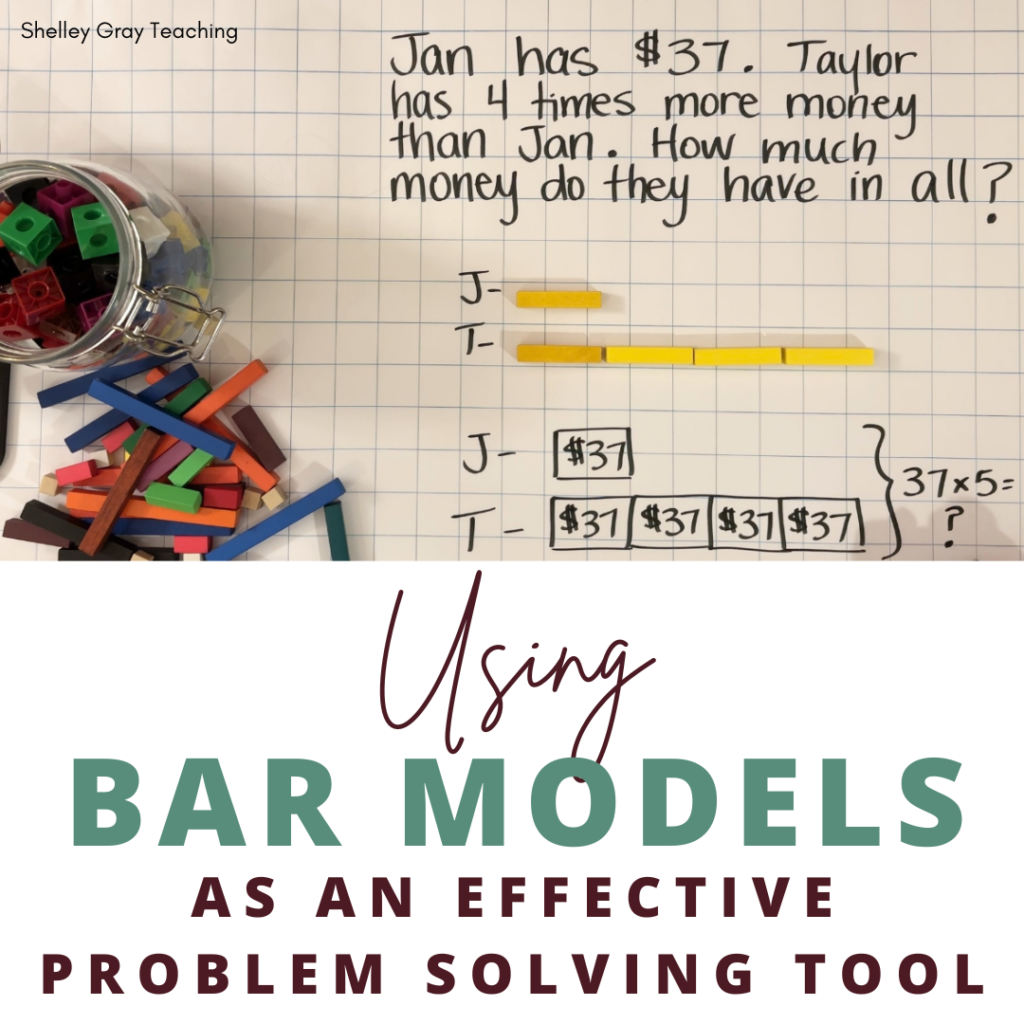
Have you tried Model Drawing in your classroom? I recently read the book 8 Step Model Drawing by Bob Hogan and Char Forsten. I have always been a fan of bar models, but this book was an eye opener as to just how effective they are as a problem solving tool. The authors state that about 80% of word problems that students encounter can be effectively solved using models like these.
My mind has been spinning with all of the other potential uses for bar models beyond basic problem-solving.
As I continued to read more about model drawing, it became clear to me that they can be connected beautifully to so many different math manipulatives. I think every teacher should know about model drawing, so I decided to put together a 10-part video series with ideas you can take directly back to your classroom. These videos will incorporate both math manipulatives and model drawing for different problems including fractions, multiplication, division, and more! As the videos are posted on Instagram, TikTok, Facebook, and YouTube, I’ll also add links here so you can find them easily.
I hope you enjoy this video series! If you’d like to know even more about model drawing, be sure to check out Step-by-Step Model Drawing as well as 8-Step Model Drawing.
Day 1: Using Models and Manipulatives to Solve Fraction Problems
Day 2: Using Models and Manipulatives to Solve (More) Fraction Problems
I decided to focus on fractions for 2 out of the 10 videos in this series, because models are so effective for visualizing fraction problems. The problem below is one of my favorites because it makes a 2-part, more complex problem so simple to visualize.
View this video below or on these social media outlets:
Day 3: Using Models and Manipulatives to Make Addition and Subtraction Word Problems Visual
Models are very well-suited to addition and subtraction problems. They not only make the problem easier to understand, but reinforce the inverse relationships between addition and subtraction. This video shows two different problems and how bar models can be used.
**Note** I neglected to make the parts of the bar different sizes in the second problem. This is my mistake, and I will be re-creating this video soon. In the meantime, please note that the pieces should be more to scale to show the differences in the magnitude of the numbers.**
View this video below or on these social media outlets:
Day 4: Using Models and Manipulatives to Build Multiplicative Reasoning
Day 5: Using Models to Make Division Problems Visual
Bar models for division are pretty straightforward, and we might neglect to use them because they don’t feel necessary. However, remember that modeling simple problems is important so that students feel comfortable with models as a tool for more complex problems. Additionally, I love how division models effectively connect multiplication and division, as well as build a foundation for fraction concepts.
View this video below or on the following social media outlets:
Day 6: Making Ratio Conceptual Using Models and Concrete Manipulatives
Let’s take a look at how we can make ratio more conceptual by using models and concrete manipulatives!
View this video below or on the following social media outlets:






